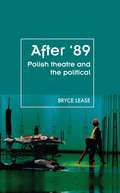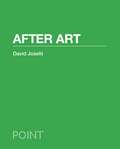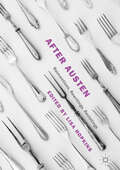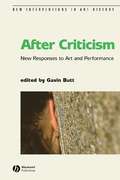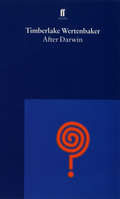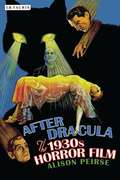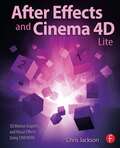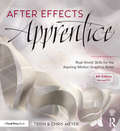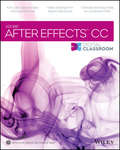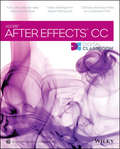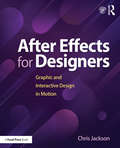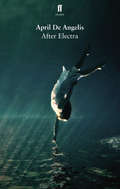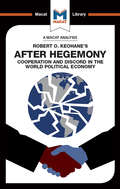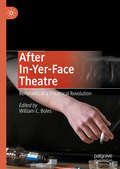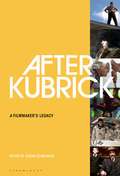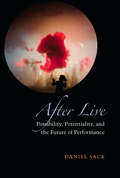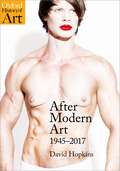- Table View
- List View
After '89: Polish theatre and the political (PDF)
by Bryce LeaseAfter '89 takes as its subject the dynamic new range of performance practices that have been developed since the demise of communism in the flourishing theatrical landscape of Poland. After 1989, the theatre has retained its historical role as the crucial space for debating and interrogating cultural and political identities. Providing access to scholarship and criticism not readily accessible to an English-speaking readership, this study surveys the rebirth of the theatre as a site of public intervention and social criticism since the establishment of democracy and the proliferation of theatre makers that have flaunted cultural commonplaces and begged new questions of Polish culture. Lease argues that the most significant change in performance practice after 1989 has been from opposition to the state to a more pluralistic practice that engages with marginalized identities purposefully left out of the rhetoric of freedom and independence.
After '89: Polish theatre and the political (Theatre: Theory - Practice - Performance Ser.)
by Bryce LeaseAfter '89 takes as its subject the dynamic new range of performance practices that have been developed since the demise of communism in the flourishing theatrical landscape of Poland. After 1989, the theatre has retained its historical role as the crucial space for debating and interrogating cultural and political identities. Providing access to scholarship and criticism not readily accessible to an English-speaking readership, this study surveys the rebirth of the theatre as a site of public intervention and social criticism since the establishment of democracy and the proliferation of theatre makers that have flaunted cultural commonplaces and begged new questions of Polish culture. Lease argues that the most significant change in performance practice after 1989 has been from opposition to the state to a more pluralistic practice that engages with marginalized identities purposefully left out of the rhetoric of freedom and independence.
After Art
by David JoselitArt as we know it is dramatically changing, but popular and critical responses lag behind. In this trenchant illustrated essay, David Joselit describes how art and architecture are being transformed in the age of Google. Under the dual pressures of digital technology, which allows images to be reformatted and disseminated effortlessly, and the exponential acceleration of cultural exchange enabled by globalization, artists and architects are emphasizing networks as never before. Some of the most interesting contemporary work in both fields is now based on visualizing patterns of dissemination after objects and structures are produced, and after they enter into, and even establish, diverse networks. Behaving like human search engines, artists and architects sort, capture, and reformat existing content. Works of art crystallize out of populations of images, and buildings emerge out of the dynamics of the circulation patterns they will house. Examining the work of architectural firms such as OMA, Reiser + Umemoto, and Foreign Office, as well as the art of Matthew Barney, Ai Weiwei, Sherrie Levine, and many others, After Art provides a compelling and original theory of art and architecture in the age of global networks.
After Art (PDF)
by David JoselitArt as we know it is dramatically changing, but popular and critical responses lag behind. In this trenchant illustrated essay, David Joselit describes how art and architecture are being transformed in the age of Google. Under the dual pressures of digital technology, which allows images to be reformatted and disseminated effortlessly, and the exponential acceleration of cultural exchange enabled by globalization, artists and architects are emphasizing networks as never before. Some of the most interesting contemporary work in both fields is now based on visualizing patterns of dissemination after objects and structures are produced, and after they enter into, and even establish, diverse networks. Behaving like human search engines, artists and architects sort, capture, and reformat existing content. Works of art crystallize out of populations of images, and buildings emerge out of the dynamics of the circulation patterns they will house. Examining the work of architectural firms such as OMA, Reiser + Umemoto, and Foreign Office, as well as the art of Matthew Barney, Ai Weiwei, Sherrie Levine, and many others, After Art provides a compelling and original theory of art and architecture in the age of global networks.
After Austen: Reinventions, Rewritings, Revisitings
by Lisa HopkinsThis collection of twelve new essays examines some of what Jane Austen has become in the two hundred years since her death. Some of the chapters explore adaptations or repurposings of her work while others trace her influence on a surprising variety of different kinds of writing, sometimes even when there is no announced or obvious debt to her. In so doing they also inevitably shed light on Austen herself. Austen is often considered romantic and not often considered political, but both those perceptions are challenged her, as is the idea that she is primarily a writer for and about women. Her books are comic and ironic, but they have been reworked and drawn upon in very different genres and styles. Collectively these essays testify to the extraordinary versatility and resonance of Austen’s books.
After Criticism: New Responses to Art and Performance (New Interventions in Art History)
by Gavin ButtIt has recently become apparent that criticism has fallen on hard times. Either commodification is deemed to have killed it off, or it has become institutionally routine. This book explores contemporary approaches which have sought to renew criticism's energies in the wake of a 'theatrical turn' in recent visual arts practice, and the emergence of a 'performative' arts writing over the past decade or so. Issues addressed include the 'performing' of art's histories; the consequences for criticism of embracing boredom, distraction and other 'queer' forms of (in)attention; and the importance of exploring writerly process in responding to aesthetic experience. Bringing together newly commissioned work from the fields of art history, performance studies, and visual culture with the writings of contemporary artists, After Criticism provides a set of experimental essays which demonstrate how 'the critical' might live on as a vital and efficacious force within contemporary culture.
After Darwin: The Break Of Day, After Darwin, Credible Witness, The Ash Girl, Dianeira
by Timberlake WertenbakerMillie, a director, discusses with her actors, Ian and Tom, how to interpret two famous historical figures from the nineteenth century. It's 1831. The naturalist Charles Darwin is invited to travel with Robert Fitzroy into uncharted waters off the coast of South America aboard 'The Beagle'. Their five year journey is fraught with philosophical and personal tensions. Fitzroy, a staunch Christian, has faith in the unquestionable authority of the Bible; Darwin begins to explore a more radical vision, his theory of natural selection. A meditation on history and human relationships, After Darwin links past and present through these five characters, and raises timeless questions about faith, friendship and how we interpret the past.After Darwin was first performed in July 1998, at Hampstead Theatre, London.
After Dracula: The 1930s Horror Film
by Alison PeirseAfter Dracula tells of films set in London usic halls and Yorkshire coal mines, South Sea Islands and Hungarian modernist houses of horror, with narrators that survey the outskirts of contemporary Paris and travel back in time to ancient Egypt. Alison Peirse argues that Dracula (1931) has been canonised to the detriment of other innovative and original 1930s horror films in Europe and America. By casting out the deified vampire, she reveals a cycle of films made over the 1930s that straddle both the pre- and post-regulatory era of the Hays Production Code an stringent censorship from the British Board of Film Censors. These films are indepenedent and studio productions, literary adaptations, folktales and original screenplays, and include Werewolf of London, The Man Who Changed His Mind, Island of Lost Souls and Vampyr. The book considers the horror genre's international evolution during this period, engaging with a number of European horror films that have hitherto received cursory attention. It focuses on the interplay between Continental, British and transatlantic contexts, and particularly on the intriguing, the obscure and the underrated.
After Effects and Cinema 4D Lite: 3D Motion Graphics and Visual Effects Using CINEWARE
by Chris JacksonOne of the most exciting new features in After Effects is the integration of Cinema 4D using the CINEWARE plug-in and a free version of Cinema 4D Lite. Both provide a wide assortment of new 3D tools and options that are difficult or nearly impossible to achieve in After Effects alone. This book clearly demonstrates how the new 3D workflow bridges the two applications together to raise the design bar for motion graphics and broadcast design. Hands-on exercises teach you essential production skills including: Modeling in CINEMA 4D Lite Importing 3D models in After Effects Tracking 3D motion in After Effects Compositing with CINEWARE Using MoGraph features in CINEMA 4D Rendering and optimization techniques Additional online materials include project files and videos showcasing the techniques covered in the book. To access these materials, please see the 'eResources' tab.
After Effects and Cinema 4D Lite: 3D Motion Graphics and Visual Effects Using CINEWARE
by Chris JacksonOne of the most exciting new features in After Effects is the integration of Cinema 4D using the CINEWARE plug-in and a free version of Cinema 4D Lite. Both provide a wide assortment of new 3D tools and options that are difficult or nearly impossible to achieve in After Effects alone. This book clearly demonstrates how the new 3D workflow bridges the two applications together to raise the design bar for motion graphics and broadcast design. Hands-on exercises teach you essential production skills including: Modeling in CINEMA 4D Lite Importing 3D models in After Effects Tracking 3D motion in After Effects Compositing with CINEWARE Using MoGraph features in CINEMA 4D Rendering and optimization techniques Additional online materials include project files and videos showcasing the techniques covered in the book. To access these materials, please see the 'eResources' tab.
After Effects Apprentice: Real-World Skills for the Aspiring Motion Graphics Artist (Apprentice Series)
by Chris Meyer Trish MeyerWhether you’re new to After Effects and want to get up to speed quickly, or already a user who needs to become familiar with the new features, After Effects Apprentice was created for you. With 12 core lessons including a trio of projects combining After Effects with CINEMA 4D Lite, you’ll learn how to tap this program’s vast potential – whether you create motion graphics for network television, corporate communications, or your own projects. Fully updated to cover the major new features added in After Effects CC, this edition of the book presents a professional perspective on the most important features a motion graphics artist needs to master in order to use After Effects effectively. You’ll learn to creatively combine layers; animate eye-catching titles; manipulate 3D space; color key, track or rotoscope existing footage to add new elements; and use effects to generate excitement or enhance the realism of a scene. Easy to follow, step-by-step instructions guide you through the features, with explanations of the "why" instead of just the "how" behind each technique. You’ll learn more than just the tools; you’ll learn skills that you can immediately put to work expressing your own ideas in your productions. USER LEVEL: Novice–Intermediate Topics include how to: • Animate, edit, layer, and composite a variety of media. • Manipulate keyframes and the way they interpolate to create more refined animations. • Use masks, mattes, stencils and blending modes to add sophistication to your imagery. • Create, animate, and extrude text and shape layers. • Explore 3D space, including using CINEMA 4D Lite. • Use tracking and keying to create special effects, such as replacing screen displays. A companion website at www.routledge.com/cw/meyer makes available for download all exercise source material and After Effects CC project files required to get the most out of this book.
After Effects Apprentice: Real-World Skills for the Aspiring Motion Graphics Artist (Apprentice Series)
by Chris Meyer Trish MeyerWhether you’re new to After Effects and want to get up to speed quickly, or already a user who needs to become familiar with the new features, After Effects Apprentice was created for you. With 12 core lessons including a trio of projects combining After Effects with CINEMA 4D Lite, you’ll learn how to tap this program’s vast potential – whether you create motion graphics for network television, corporate communications, or your own projects. Fully updated to cover the major new features added in After Effects CC, this edition of the book presents a professional perspective on the most important features a motion graphics artist needs to master in order to use After Effects effectively. You’ll learn to creatively combine layers; animate eye-catching titles; manipulate 3D space; color key, track or rotoscope existing footage to add new elements; and use effects to generate excitement or enhance the realism of a scene. Easy to follow, step-by-step instructions guide you through the features, with explanations of the "why" instead of just the "how" behind each technique. You’ll learn more than just the tools; you’ll learn skills that you can immediately put to work expressing your own ideas in your productions. USER LEVEL: Novice–Intermediate Topics include how to: • Animate, edit, layer, and composite a variety of media. • Manipulate keyframes and the way they interpolate to create more refined animations. • Use masks, mattes, stencils and blending modes to add sophistication to your imagery. • Create, animate, and extrude text and shape layers. • Explore 3D space, including using CINEMA 4D Lite. • Use tracking and keying to create special effects, such as replacing screen displays. A companion website at www.routledge.com/cw/meyer makes available for download all exercise source material and After Effects CC project files required to get the most out of this book.
After Effects CC Digital Classroom (Digital Classroom)
by Jerron Smith AGI Creative TeamEdit and apply effects for stellar visual and special effects This important resource is like having a personal instructor guiding you through each lesson, while you work at your own pace. Each self-paced lesson lets you discover essential skills and explore the new features and capabilities of Adobe After Effects CC (Creative Cloud). Every lesson is presented in full color with step-by-step instructions. Video tutorials and lesson files on a companion DVD were developed by the same team of professional instructors and After Effects experts who have created many of the official training titles for Adobe Systems. Combines a full-color, step-by-step instructional book along with lesson files and video training from expert instructors Written for After Effects CC, a leading motion graphics and visual effects program that allows users to create and deliver compelling motion graphics and visual effects Demonstrates how to quickly get up to speed using After Effects to create and animate text, images, and video for the web, TV, and digital displays After Effects CC Digital Classroom takes you from the basics through intermediate-level topics, teaching you this complex software in a clear, approachable manner. DVD and other supplementary materials are not included as part of the e-book file, but are available for download after purchase.
After Effects CC Digital Classroom (Digital Classroom)
by Jerron Smith AGI Creative TeamEdit and apply effects for stellar visual and special effects This important resource is like having a personal instructor guiding you through each lesson, while you work at your own pace. Each self-paced lesson lets you discover essential skills and explore the new features and capabilities of Adobe After Effects CC (Creative Cloud). Every lesson is presented in full color with step-by-step instructions. Video tutorials and lesson files on a companion DVD were developed by the same team of professional instructors and After Effects experts who have created many of the official training titles for Adobe Systems. Combines a full-color, step-by-step instructional book along with lesson files and video training from expert instructors Written for After Effects CC, a leading motion graphics and visual effects program that allows users to create and deliver compelling motion graphics and visual effects Demonstrates how to quickly get up to speed using After Effects to create and animate text, images, and video for the web, TV, and digital displays After Effects CC Digital Classroom takes you from the basics through intermediate-level topics, teaching you this complex software in a clear, approachable manner. DVD and other supplementary materials are not included as part of the e-book file, but are available for download after purchase.
After Effects for Designers: Graphic and Interactive Design in Motion
by Chris JacksonAfter Effects for Designers teaches design students, artists, and web, graphic, and interactive designers how to design, develop, and deploy motion design projects using Adobe After Effects. Author Chris Jackson balances fundamental aspects of time-based design with related techniques, and explores the principles of animation; composition and layout; visual hierarchy; typography; cinematic storytelling; 3D modelling; compositing, and more. Each chapter contains unique, step-by-step project exercises that offer timesaving practical tips and hands-on design techniques, teaching readers how to effectively use the tools at their disposal in order to conceptualize and visualize creative solutions to their own motion design work. Readers will build professional-world examples in every chapter and, as a result, learn how to both design effectively using After Effects and practically apply these skills in client-based work. An accompanying companion website includes complete project files for the book's chapter exercises, and additional video tutorials.
After Effects for Designers: Graphic and Interactive Design in Motion
by Chris JacksonAfter Effects for Designers teaches design students, artists, and web, graphic, and interactive designers how to design, develop, and deploy motion design projects using Adobe After Effects. Author Chris Jackson balances fundamental aspects of time-based design with related techniques, and explores the principles of animation; composition and layout; visual hierarchy; typography; cinematic storytelling; 3D modelling; compositing, and more. Each chapter contains unique, step-by-step project exercises that offer timesaving practical tips and hands-on design techniques, teaching readers how to effectively use the tools at their disposal in order to conceptualize and visualize creative solutions to their own motion design work. Readers will build professional-world examples in every chapter and, as a result, learn how to both design effectively using After Effects and practically apply these skills in client-based work. An accompanying companion website includes complete project files for the book's chapter exercises, and additional video tutorials.
After Electra
by April de AngelisI blame the books they learned to read with. Daddy at the office. Mummy looking out of the window while she's washing up. I should have burnt them.It's Virgie's eighty-fourth birthday and she is bucking convention. But, always more committed as an artist than a mother, Virgie has not reckoned on her family and friends' determination to thwart her plans. A moving black comedy that reimagines the meaning of family, April De Angelis' After Electra premiered at the Theatre Royal Plymouth, in April 2015 before transferring to the Tricycle Theatre, London.
After Hegemony (The Macat Library)
by Ramon Pacheco PardoRobert O. Keohane’s After Hegemony is both a classic of international relations scholarship and an example of how creative thinking can help shed new light on the world. Since the end of World War II, the global political landscape had been dominated by two superpowers, the USA and the USSR, and the tense stand-off of the Cold War. But, as the Cold War began to thaw, it became clear that a new global model might emerge. The commonly held belief amongst those studying international relations was that it was impossible for nations to work together without the influence of a hegemon (a dominant international power) to act as both referee and ultimate decision-maker. This paradigm – neorealism – worked on the basis that every nation will do all it can to maximize its power, with such processes only checked by a balance of competing powers. Keohane, however, examined the evidence afresh and came up with novel explanations for what was likely to come next. He went outside the dominant paradigm, and argued for what came to be known as the neoliberal conception of international politics. States, Keohane said, can and will cooperate without the influence of a hegemonic power, so long as doing so brings them absolute gains in the shape of economic and cultural benefits. In Keohane’s highly-creative view, the pursuit of national self-interest leads naturally to international cooperation – and to the formation of global regimes (such as the United Nations) that can reinforce and foster it.
After Hegemony (The Macat Library)
by Ramon Pacheco PardoRobert O. Keohane’s After Hegemony is both a classic of international relations scholarship and an example of how creative thinking can help shed new light on the world. Since the end of World War II, the global political landscape had been dominated by two superpowers, the USA and the USSR, and the tense stand-off of the Cold War. But, as the Cold War began to thaw, it became clear that a new global model might emerge. The commonly held belief amongst those studying international relations was that it was impossible for nations to work together without the influence of a hegemon (a dominant international power) to act as both referee and ultimate decision-maker. This paradigm – neorealism – worked on the basis that every nation will do all it can to maximize its power, with such processes only checked by a balance of competing powers. Keohane, however, examined the evidence afresh and came up with novel explanations for what was likely to come next. He went outside the dominant paradigm, and argued for what came to be known as the neoliberal conception of international politics. States, Keohane said, can and will cooperate without the influence of a hegemonic power, so long as doing so brings them absolute gains in the shape of economic and cultural benefits. In Keohane’s highly-creative view, the pursuit of national self-interest leads naturally to international cooperation – and to the formation of global regimes (such as the United Nations) that can reinforce and foster it.
After In-Yer-Face Theatre: Remnants of a Theatrical Revolution
by William C. BolesThis book revisits In-Yer-Face theatre, an explosive, energetic theatrical movement from the 1990s that introduced the world to playwrights Sarah Kane, Martin McDonagh, Mark Ravenhill, Jez Butterworth, and many others. Split into three sections the book re-examines the era, considers the movement’s influence on international theatre, and considers its lasting effects on contemporary British theatre. The first section offers new readings on works from that time period (Antony Neilson and Mark Ravenhill) as well as challenges myths created by the Royal Court Theatre about the its involvement with In-Yer-Face theatre. The second section discusses the influence of In-Yer-Face on Portuguese, Russian and Australian theater, while the final section discusses the legacy of In-Yer-Face writers as well as their influences on more recent playwrights, including chapters on Philip Ridley, Sarah Kane, Joe Penhall, Martin Crimp, Dennis Kelly, and Verbatim Drama.
After Kubrick: A Filmmaker’s Legacy
by Jeremi SzaniawskiTaking at its starting point the idea that Kubrick's cinema has constituted an intellectual, cerebral, and philosophical maze in which many filmmakers (as well as thinkers and a substantial fringe of the general public) have gotten lost at one point or another, this collection looks at the legacy of Kubrick's films in the 21st century.The main avenues investigated are as follows: a look at Kubrick's influence on his most illustrious followers (Paul Thomas Anderson, the Coen Brothers, Christopher Nolan, Ridley Scott, and Lars von Trier, to name a few); Kubrick in critical reception; Kubrick in stylistic (camera movements, set designs, music), thematic (artificial intelligence, new frontiers- large and small), aesthetic (the question of genre, pastiche, stereoscopy) and political terms (paranoia, democracy and secret societies, conspiracy theories). The contributions coalesce around the concept of a Kubrickian substrate, rich and complex, which permeates our Western cultural landscape very much to this day, informing and sometimes announcing/reflecting it in twisted ways, 21 years after the director's death.
After Kubrick: A Filmmaker’s Legacy
Taking at its starting point the idea that Kubrick's cinema has constituted an intellectual, cerebral, and philosophical maze in which many filmmakers (as well as thinkers and a substantial fringe of the general public) have gotten lost at one point or another, this collection looks at the legacy of Kubrick's films in the 21st century.The main avenues investigated are as follows: a look at Kubrick's influence on his most illustrious followers (Paul Thomas Anderson, the Coen Brothers, Christopher Nolan, Ridley Scott, and Lars von Trier, to name a few); Kubrick in critical reception; Kubrick in stylistic (camera movements, set designs, music), thematic (artificial intelligence, new frontiers- large and small), aesthetic (the question of genre, pastiche, stereoscopy) and political terms (paranoia, democracy and secret societies, conspiracy theories). The contributions coalesce around the concept of a Kubrickian substrate, rich and complex, which permeates our Western cultural landscape very much to this day, informing and sometimes announcing/reflecting it in twisted ways, 21 years after the director's death.
After Live: Possibility, Potentiality, and the Future of Performance (Theater: Theory/Text/Performance)
by Daniel A SackIn the dark of the blackout before the curtain rises, the theater holds its many worlds suspended on the verge of appearance. How can a performance sustain this sense of potentiality that grounds all live production? Or if a stage-world does begin, what kinds of future might appear within its frame? Conceiving of the theater as a cultural institution devoted to experimenting with the future, this book begins and ends on the dramatic stage; in between it traverses literature, dance, sculpture, and performance art to explore the various futures we make in a live event. After Live conceives of traditional dramatic theater as a place for taming the future and then conceptualizes how performance beyond this paradigm might stage the unruly nature of futurity. Chapters offer insights into the plays of Beckett, Churchill, Eno, and Gombrowicz, devised theater practices, and include an extended exploration of the Italian director Romeo Castellucci. Through the lens of potentiality, other chapters present novel approaches to minimalist sculpture and dance, then reflect on how the beholder him or herself is called upon to perform when confronted by such work.
After Modern Art: 1945-2017 (Oxford History of Art)
by David HopkinsContemporary art can be baffling and beautiful, provocative and disturbing. This pioneering book presents a new look at the controversial period between 1945 and 2015, when art and its traditional forms were called into question. It focuses on the relationship between American and European art, and challenges previously held views about the origins of some of the most innovative ideas in art of this time. Major artists such as Jackson Pollock, Robert Rauschenberg, Andy Warhol, Joseph Beuys, Gerhard Richter, Louise Bourgeois, Cindy Sherman, Jeff Koons, and Shiran Neshat are all discussed, as is the art world of the last fifty years. Important trends are also covered including Abstract Expressionism, Pop Art, Minimalism, Conceptualism, Postmodernism, and Performance Art. This revised and updated second edition includes a new chapter exploring art since 2000 and how globalization has caused shifts in the art world, an updated Bibliography, and 16 new, colour illustrations.
After Modern Art: 1945-2017 (Oxford History of Art)
by David HopkinsContemporary art can be baffling and beautiful, provocative and disturbing. This pioneering book presents a new look at the controversial period between 1945 and 2015, when art and its traditional forms were called into question. It focuses on the relationship between American and European art, and challenges previously held views about the origins of some of the most innovative ideas in art of this time. Major artists such as Jackson Pollock, Robert Rauschenberg, Andy Warhol, Joseph Beuys, Gerhard Richter, Louise Bourgeois, Cindy Sherman, Jeff Koons, and Shiran Neshat are all discussed, as is the art world of the last fifty years. Important trends are also covered including Abstract Expressionism, Pop Art, Minimalism, Conceptualism, Postmodernism, and Performance Art. This revised and updated second edition includes a new chapter exploring art since 2000 and how globalization has caused shifts in the art world, an updated Bibliography, and 16 new, colour illustrations.

